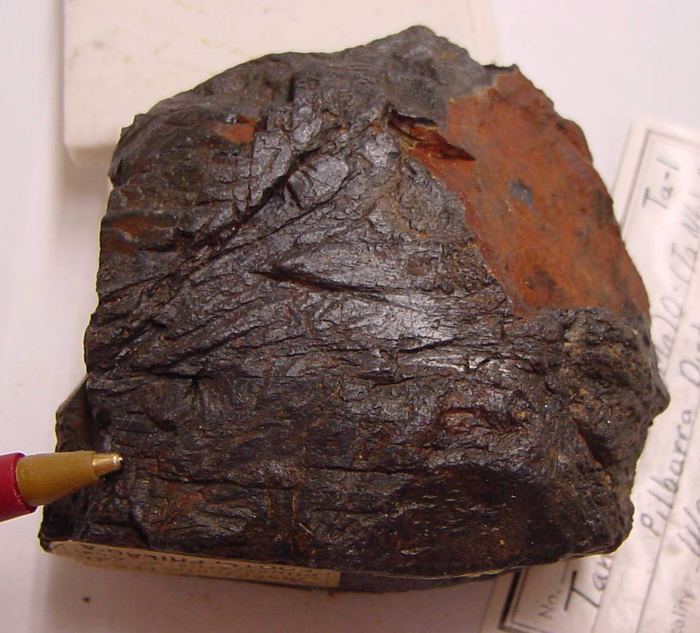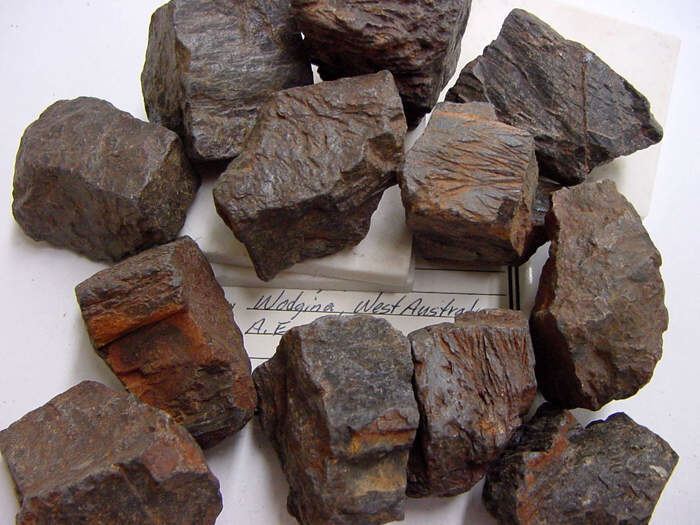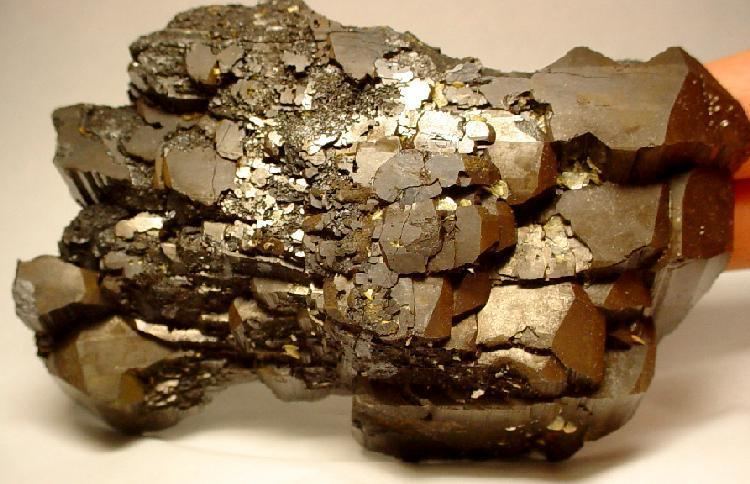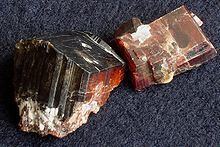Category Oxide minerals Strunz classification 4.DB.35 | Formula(repeating unit) (Fe,Mn)Ta2O6 Crystal system Orthorhombic | |
 | ||
Crystal class Dipyramidal (mmm)H-M symbol: (2/m 2/m 2/m) Color Dark black, iron-black to dark brown, reddish brown | ||
The mineral group tantalite [(Fe, Mn)Ta2O6] is the primary source of the chemical element tantalum. It is chemically similar to columbite, and the two are often grouped together as a semi-singular mineral called coltan or "columbite-tantalite" in many mineral guides. However, tantalite has a much greater specific gravity than columbite (8.0+ compared to columbite's 5.2). Iron-rich tantalite is the mineral tantalite-(Fe) or ferrotantalite and manganese-rich is tantalite-(Mn) or manganotantalite.
Contents

Tantalite is also very close to tapiolite. Those minerals have same chemical composition, but different crystal symmetry orthorhombic for tantalite and tetragonal for tapiolite.

Tantalite is black to brown in both color and streak. Manganese-rich tantalites can be brown and translucent.
Occurrence

Tantalite occurs in granitic pegmatites that are rich in rare-earth elements, and in placer deposits derived from such rocks. It has been found in Australia, Brazil, Canada, Colombia (Guainía and Vichada), Egypt, northern Europe, Madagascar, Namibia, Nigeria, Rwanda, the United States (California, Colorado, Maine, and Virginia), and Zimbabwe. Brazil has the world's largest reserve of tantalite (52.1%). In 2006, 75% of world tantalite production came from Australia.
Sustainability
The mining of tantalite causes many environmental and social problems in Democratic Republic of Congo.

